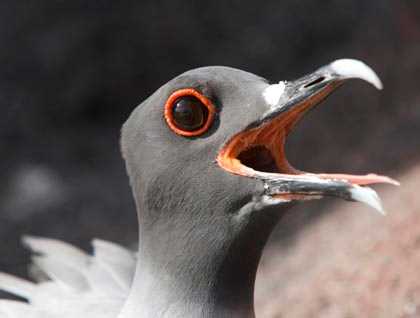In our last day of exploration, we spent the whole time on Genovesa Island. This geological formation is located north of the equator. This is the main reason why the average water temperature at this location is a bit warmer, compared to the rest of the archipelago. This fact and the isolation of this island explain why the flora and fauna have differences and adaptations that are unique to this place.
The spines of the prickly pear cacti are very soft because they never evolved with a natural predator, compared to the rest of the archipelago. Marine iguanas are the smallest among the seven populations found in the Galápagos, probably due to the limited amount of food sources available for them in Genovesa. There are many other unique adaptations that make this isolated group of oceanic volcanoes a living laboratory for scientists and other visitors of this enchanted archipelago.
Despite its size, the island has only two visitor sites. The first is probably the best visitor site to observe one of the largest colonies of frigatebirds, yellow-crowned night herons, and red-footed boobies. The second site is the best place to see Nazca boobies and one of the top predators of Galápagos: the short-eared owl.
This dormant volcano is the home to hundreds of thousands of marine birds of many different species. From the distance, onboard the National Geographic Endeavour, we saw many frigatebirds and red-footed boobies. That was a good sign that our last day in paradise was going to be spectacular. This place is also one of the best places for snorkeling, featuring a large amount of hammerhead sharks, rays, and lots of tropical fish.
It was such an amazing week full of good memories and new Galápagos friends.







